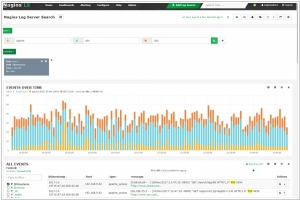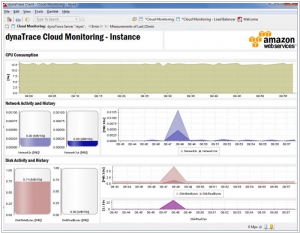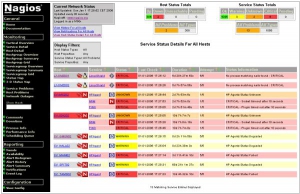Amazon CloudWatch vs Nagios
June 03, 2023 | Author: Michael Stromann
Amazon CloudWatch and Nagios are both popular monitoring tools, but they have some key differences:
1. Deployment: Amazon CloudWatch is a cloud-based monitoring service provided by Amazon Web Services (AWS). It is fully managed and integrated with AWS services, making it easy to deploy and monitor resources within the AWS ecosystem. Nagios, on the other hand, is an open-source monitoring framework that can be deployed on-premises or in the cloud, giving users more flexibility in their infrastructure choices.
2. Features and Scalability: Amazon CloudWatch offers a wide range of monitoring capabilities, including metrics collection, log monitoring, and event-driven automation. It provides seamless integration with other AWS services and can handle auto-scaling and dynamic infrastructure changes. Nagios, although highly customizable, may require additional plugins and configurations to achieve similar functionality. Nagios also requires manual scaling and configuration adjustments to handle increasing workloads.
3. Ease of Use: Amazon CloudWatch has a user-friendly interface that is integrated with the AWS Management Console, providing a unified experience for monitoring AWS resources. It offers pre-configured dashboards, intuitive metric filtering, and simple setup for various AWS services. Nagios, being an open-source tool, may have a steeper learning curve for initial setup and configuration. It requires manual configuration files and may require more technical expertise to fully utilize its features.
4. Cost: Amazon CloudWatch pricing is based on the number of metrics, dashboards, and events monitored, as well as the volume of log data ingested and stored. Nagios, being an open-source solution, is free to use, but it requires infrastructure and maintenance costs for deployment and management.
See also: Top 10 IT Monitoring software
1. Deployment: Amazon CloudWatch is a cloud-based monitoring service provided by Amazon Web Services (AWS). It is fully managed and integrated with AWS services, making it easy to deploy and monitor resources within the AWS ecosystem. Nagios, on the other hand, is an open-source monitoring framework that can be deployed on-premises or in the cloud, giving users more flexibility in their infrastructure choices.
2. Features and Scalability: Amazon CloudWatch offers a wide range of monitoring capabilities, including metrics collection, log monitoring, and event-driven automation. It provides seamless integration with other AWS services and can handle auto-scaling and dynamic infrastructure changes. Nagios, although highly customizable, may require additional plugins and configurations to achieve similar functionality. Nagios also requires manual scaling and configuration adjustments to handle increasing workloads.
3. Ease of Use: Amazon CloudWatch has a user-friendly interface that is integrated with the AWS Management Console, providing a unified experience for monitoring AWS resources. It offers pre-configured dashboards, intuitive metric filtering, and simple setup for various AWS services. Nagios, being an open-source tool, may have a steeper learning curve for initial setup and configuration. It requires manual configuration files and may require more technical expertise to fully utilize its features.
4. Cost: Amazon CloudWatch pricing is based on the number of metrics, dashboards, and events monitored, as well as the volume of log data ingested and stored. Nagios, being an open-source solution, is free to use, but it requires infrastructure and maintenance costs for deployment and management.
See also: Top 10 IT Monitoring software
Amazon CloudWatch vs Nagios in our news:
2014. Nagios launched log management solution

Nagios has introduced Nagios Log Server, a robust enterprise-level solution for monitoring and managing logs. This innovative offering empowers organizations to effortlessly view, sort, and configure logs from any source within their network. By augmenting Nagios' existing network management solutions, Log Server equips users with the capability to thoroughly analyze network events, logs, and performance benchmarks. The introduction of Nagios Log Server simplifies the management of network log data, enabling users to swiftly set up monitoring for their logs using configuration wizards. With a centralized dashboard and user-friendly management interface, Log Server facilitates seamless oversight and detailed examination of infrastructure issues, network errors, and log events.




